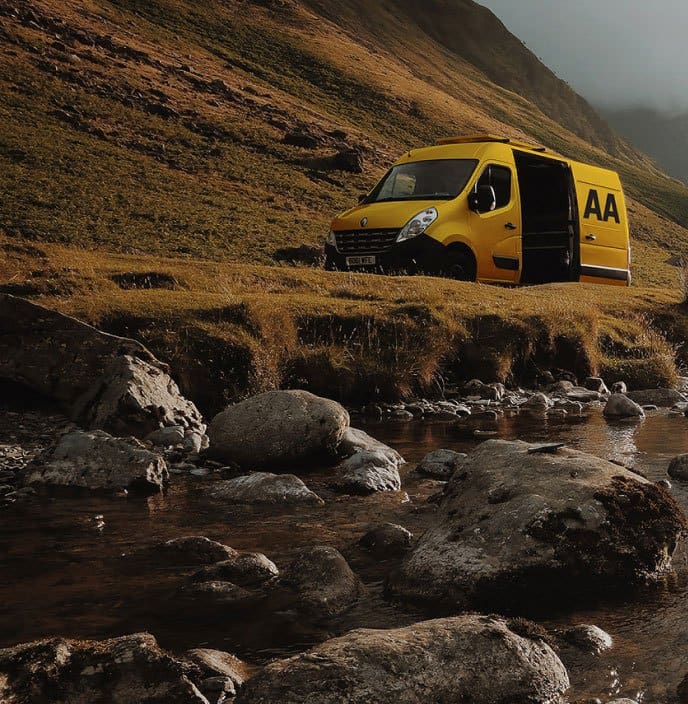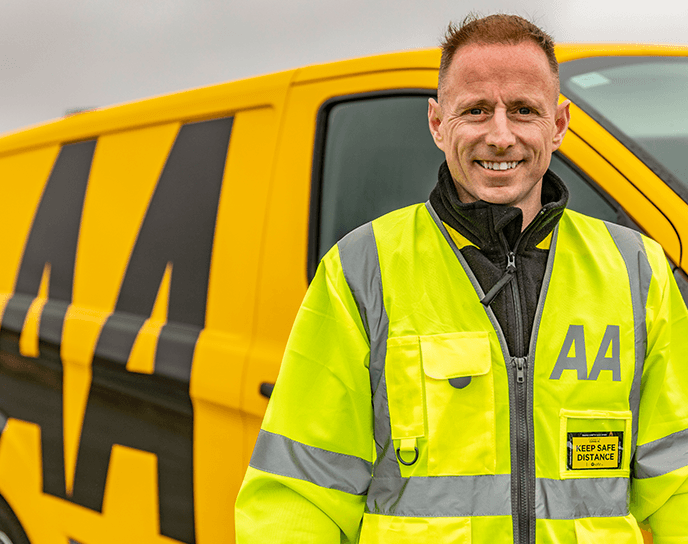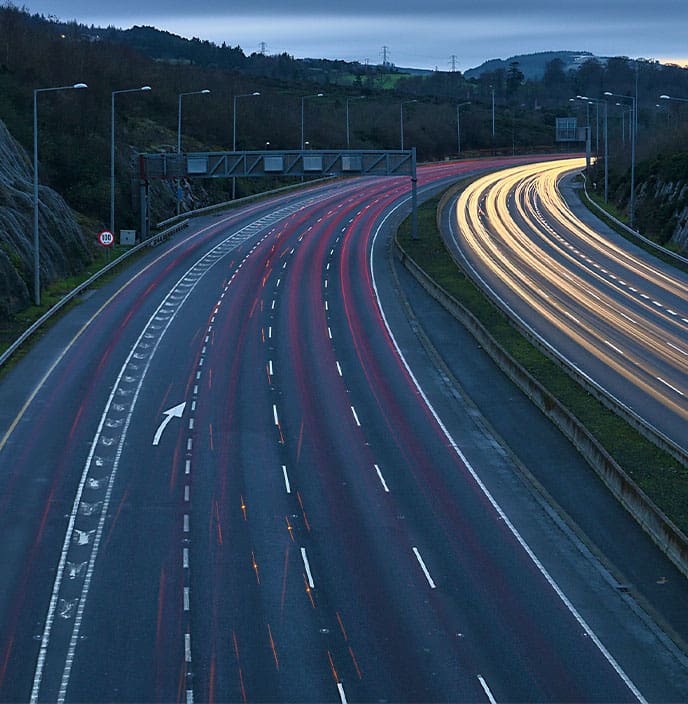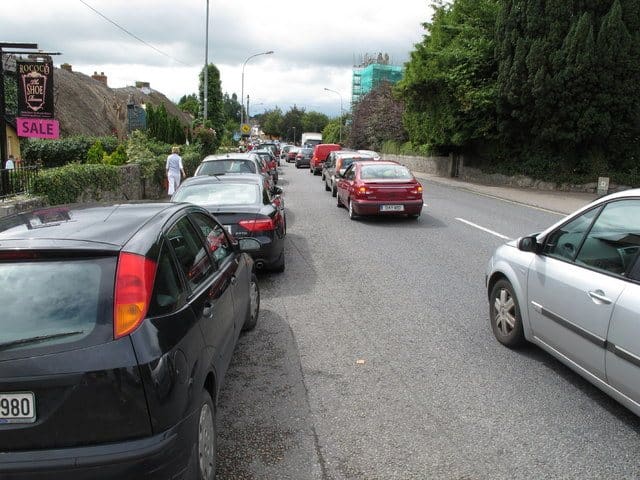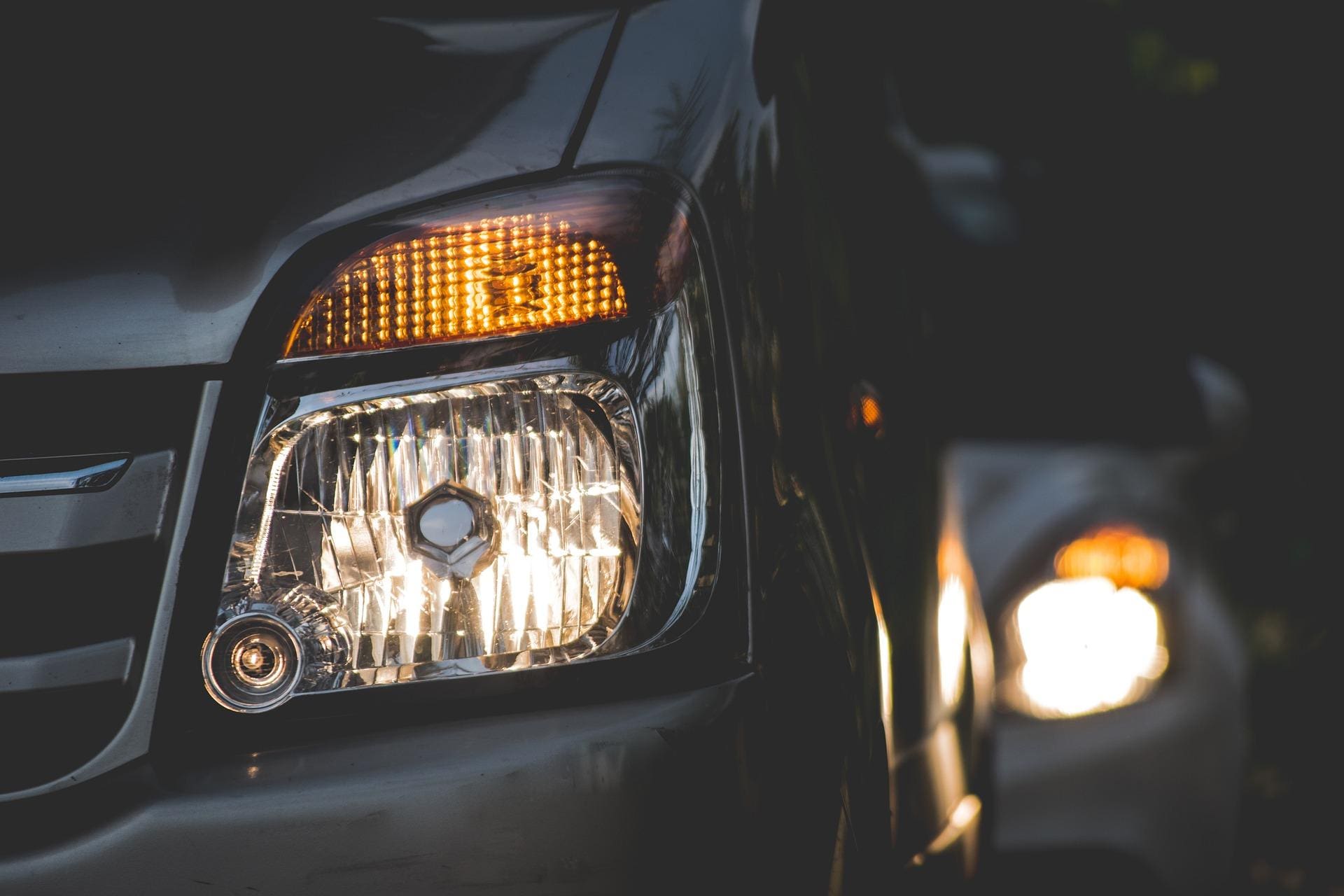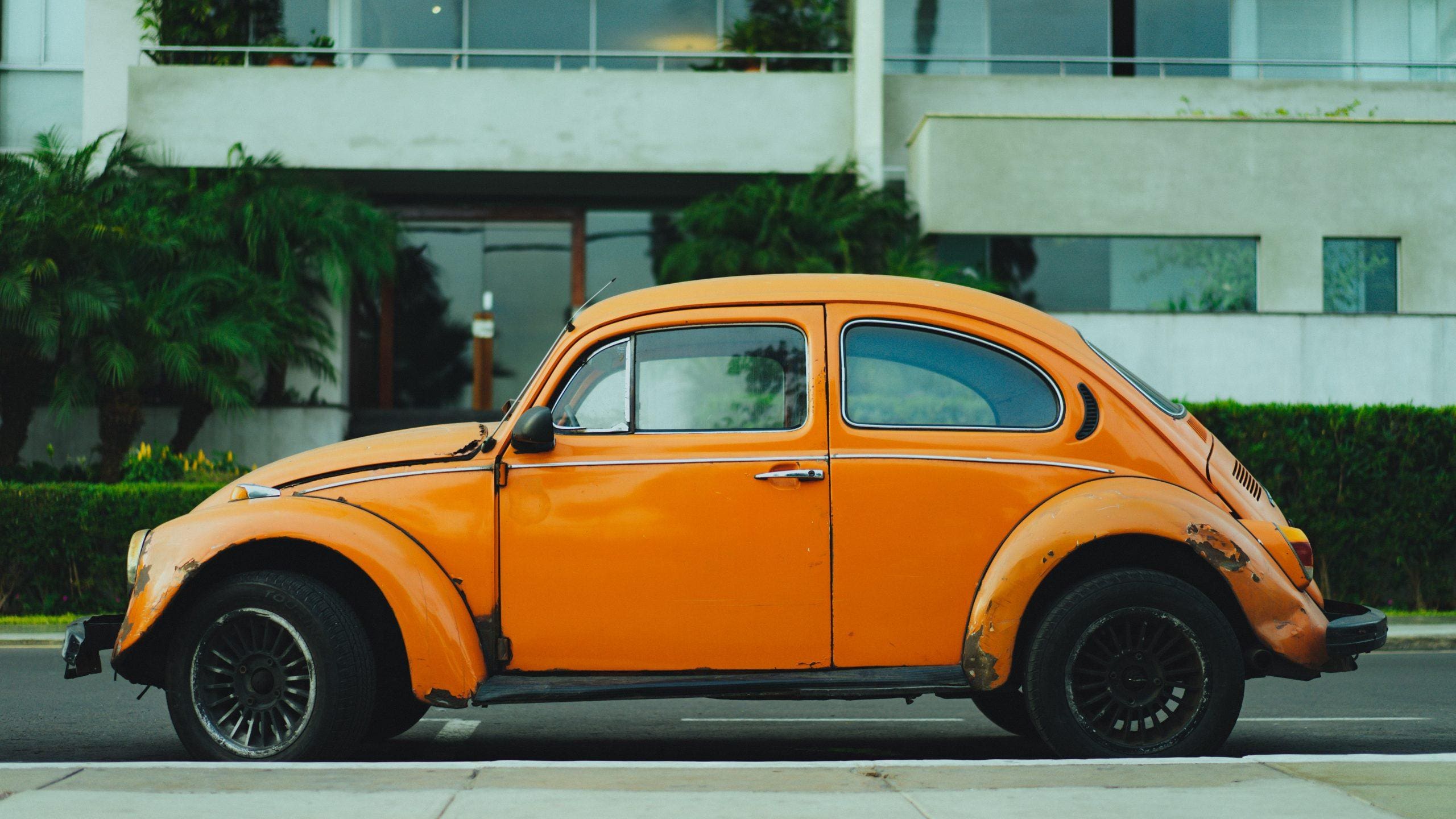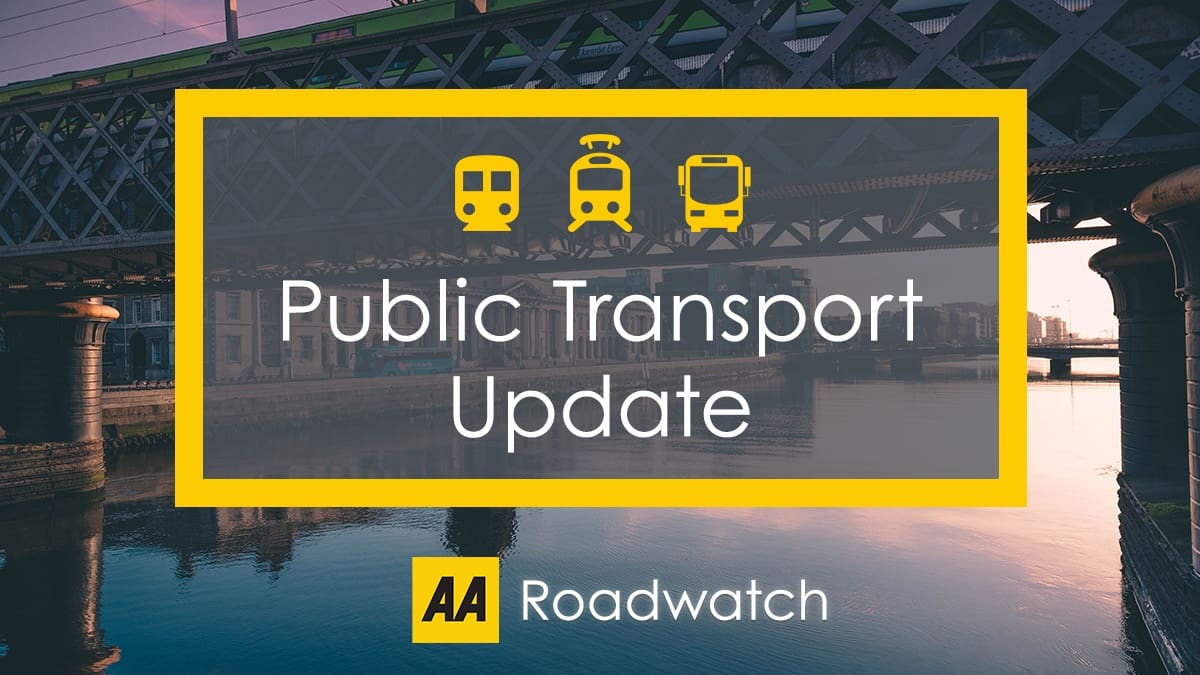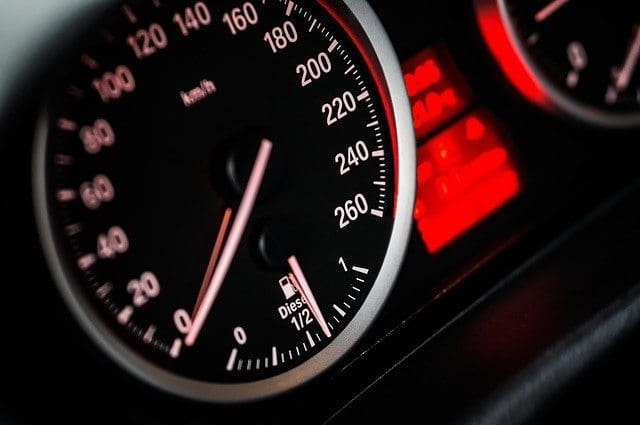How to Drive on Motorways in Ireland
At the AA we aim to provide the best driving tips and advice for our members to help keep you safe on the roads.
We know that many of you are frustrated by poor driving habits on our motorways – the huge response to our Facebook post about a middle-lane hogger in the UK is proof of that.
So, here’s a reminder about how to use motorway lanes correctly…
Motorway Rules in Ireland
Maximum Speeds
The maximum speed limit on a motorway is 120km per hour unless:
- there are signs indicating another speed limit, for example due to roadworks or bad weather
- you are driving a vehicle that is subject to a lower limit such as a bus or truck, towing a trailer, caravan or horse/cattle box
On the M50, the limit is 100km per hour between J3 M1 and J13 Sandyford, while on the section between the Port Tunnel and the M1 Interchange the limit is 80km per hour. The M50 has variable speed limits since October 2021, allowing the limits to be reduced during an incident or bad weather.
Trailers, HGVs, and Buses
The limit for vehicles towing a trailer is 80km per hour, for HGVs it’s 90km per hour, and for buses it’s 100km per hour (in all cases, unless a lower limit applies to all vehicles).
The Basics
You must not enter a motorway if:
- you are a learner driver or do not hold a full licence for the category of vehicle you are driving
- your vehicle cannot travel or maintain a speed of at least 50km per hour
- your vehicle has an engine capacity of 50cc or less, if using a combustion engine
- you drive a tractor that cannot travel at or maintain a speed of at least 50km per hour
- your vehicle does not use inflated tyres
- you are walking, cycling or moving animals
- you drive a motorised wheelchair
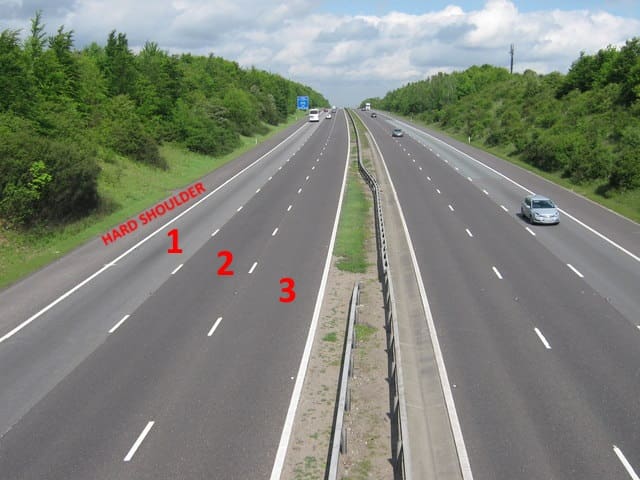
Photo adapted from original by David Anstiss
Keeping Left on Motorways
The image above shows the layout of a three-lane motorway.
The basic principle is that you should always drive in the left lane (lane 1) unless you need to overtake a slower vehicle or vehicles, or unless the lane is blocked. Once you have finished overtaking, move from the right lane (lane 2) back into the left lane as soon as it is safe to do so.
On a three-lane motorway, there is an extra overtaking lane (lane 3), but you should still keep left as much as possible. i.e. don’t drive in the right lane if the middle lane (lane 2) is empty, or in the middle lane if the left lane is empty.
You may also need to move out of the left lane at a junction, to make room for vehicles merging from the on-ramp. Again, move back into the left lane as soon as it is available. Some vehicles are not permitted to use the right lane: HGVs, and any vehicle towing a trailer, horsebox or caravan. An exception is made where there is no other lane available due to an obstruction.
Hard Shoulders
It’s an offence to drive on the hard shoulder unless in an emergency or if ordered to do so by An Garda Síochána. You could incur penalty points.
Staying Safe on Irish Motorways
When driving on a motorway, you should be checking your mirrors on a constant basis, as the picture around you will be changing all the time.
Before overtaking or changing lanes, remember ‘mirror, signal, mirror, manoeuvre’. Check your mirrors and your blind spot, then put on your indicator to let drivers behind you know that you wish to move. Move smoothly into the new lane, making sure to leave enough distance from the vehicles in front of and behind you. Remember to turn off your indicator once you have completed the manoeuvre.
Stay out of other drivers’ blind spots, especially large vehicles like trucks.
You should only pass a slower vehicle on its right, unless traffic is moving in slow queues and the traffic queue on your right is travelling more slowly than you are. Passing on the left in normal traffic flow is known as undertaking and can be very dangerous.
How to Change Lanes on Motorways
When changing lanes, you should only move one lane at a time, treating each one as an individual manoeuvre. Never drive straight across a lane to get to the next one.
Keep Your Distance on Motorways in Ireland
Always make sure you leave enough distance between your vehicle and the vehicle in front so that you can stop safely. In dry conditions, use the two-second rule – make sure that two seconds have elapsed between the vehicle in front passing a specific point, and your vehicle getting to it. When the road is wet, make sure you are four seconds behind.
When do you use a Motorway’s Auxiliary Lane?
On some motorways (for example the M50), there is an extra lane known as the auxiliary lane. It’s to the left of the main lanes, and separated from the main carriageway by road markings that are closer together than the broken white lines that divide the other lanes. It links the motorway’s on- and off-ramps between two junctions, and enables traffic to prepare to exit the motorway well in advance of a junction. It also gives extra room for merging traffic to join the main carriageway.
If your vehicle breaks down on the motorway, what should you do?
If you’ve broken down on the motorway and you’re forced to pull into the hard shoulder, it’s important to take all necessary precautions to ensure your safety.
Pull onto the hard shoulder as far as left as possible. If you must leave the car, make sure to leave the car via the left door. Do not attempt to do repairs yourself.
Use your mobile to call your breakdown cover. If you are an AA customer, you can call AA breakdown call 0818 66 77 88. If you do not have a breakdown cover, you can contact TII’s Motorway Control Centre on 0818 715 100 and let them know where you are and for further instructions.
If you do not have a mobile phone, walk to an emergency telephone on your side of the motorway – You must never attempt to cross the motorway. See our detailed guide on what to do if you break down on the motorway.
For more advice on motorway driving, check out our Motorway FAQ here.
Published 1st February 2019. Article updated 3rd May 2023.


